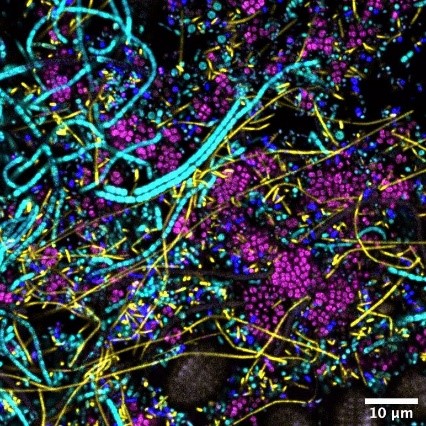Humanity depends on ecological services performed by bacteria, archaea, fungi, and protists, which recycle nutrients, nurture plant growth, purify water, make cheese and wine, and decompose wastes. Microbes also play a key role in turning atmospheric carbon dioxide back into carbon to be stored in soils or the ocean depths (and doing likewise with nitrogen, sulfur, iron, manganese, and more).
PHE investigates how current DNA technologies can be applied to answering questions ranging from: How should scientists define and measure changes in the diversity of microbial life and gain insight into its future evolutionary trajectory? How can DNA technologies be better used for other types of socially significant investigation, such as authenticating works of art and historical manuscripts? How can scientists better use DNA technologies as forensic tools for monitoring the spread of disease in the human environment? Current PHE projects concerning the Microbial Environment include:
About the icon – A microbial community on the surface of kelp. Each dot or filament is a bacterial cell and the different colors indicate different kinds of bacteria: Granulosicoccus (magenta), Planctomycetes and Verrucomicrobia (dark blue), Alphaproteobacteria (cyan), Bacteroidetes (yellow). CREDIT: Tabita Ramirez-Puebla and Jessica Mark Welch, Marine Biological Laboratory.
Publications about The Microbial Environment
. Human and domesticated animal environmental DNA as bioassays of the Anthropocene [external link]. The Innovation 4 (1): 100356, 2023 https://doi.org/10.1016/j.xinn.2022.100356 eDNA; human and domesticated animal DNA; biomarker; anthropocene
. Trajectories of COVID-19: A longitudinal analysis of many nations and subnational regions [external link]. PLOS ONE 2023
. Archiving time series sewage samples as biological records of built environments [external link]. BMC Infectious Diseases 21 (601): 2021
. Plant and Animal Diversity Is Declining, But What About Microbial Diversity? [external link]. Pp. 11 May in RealClear Science 2021 biodiversity
. Is Global Microbial Biodiversity Increasing, Decreasing, or Staying the Same? [external link]. Frontiers in Ecology and Evolution 2021
. Why Should Mitochondria Define Species? (PDF). Human Evolution 33 (1-2): 1-30, 2018 Species evolution, mitocondrial evolution, speciation, human evolution
. Using New Anthropological and Biological Tools to Learn about Leonardo Da Vinci. Human Evolution 31 (3): 125–131, 2016
